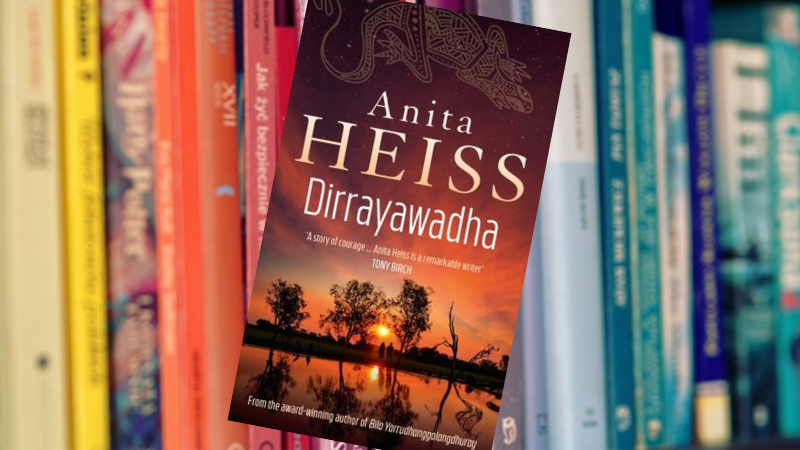Dirrayawadha
by Anita Heiss
Simon & Schuster
Miinaa was a young girl when the white ghosts first arrived. She remembers the day they raised a piece of cloth and renamed her homeland ‘Bathurst’. Now she lives at a farm called Cloverdale and works for a white family who have settled there and ‘own’ their piece of land.
The Wiradjuri people who lived on the land were welcoming and friendly to the white ghosts when they first arrived but there was no respect or even politeness in return, and some of the women were even molested. The newcomers cleared the land for farming strange animals and the native vegetation and animals disappeared.
The interlopers erected fences around land that had been ‘given’ to the white settlers, and the tribe has been pushed further off their land and away from water sources and their natural food. The leader of the tribe, Wiradradyne, is Miinaa’s brother and he thinks it is time to fight back.

When Irish convict Daniel O’Dwyer arrives at the property where Miinaa lives and works, she is drawn to him. Transported for agitating against Protestant landowners where he lived, Daniel has six years left to serve of his sentence.
Drawn together by a love of their land and a mutual hate of English invaders who ban them speaking their own language, Miinaa and Daniel begin to meet in secret … a secret that can no longer be kept when Miinaa becomes pregnant.
While Miinaa is trying to learn new ways of doing things and settling down to a life with Daniel, Wiradradyne has begun retaliatory raids on the settlers and their animals. The white ghosts fight back and there is a terrible toll on the Wiradjuri people.
Although Anita Heiss’s account is fictional, the Wiradjuri Wars did happen in Bathurst two hundred years ago in 1824. Dirrayawadha (Rise Up) shows the resistance leader Windradyne as the remarkable figure he was and surrounds him with fascinating figures otherwise lost to history.
Heiss reminds us that the way colonisers remember and record history is significantly different form the way that the colonised people remember and record history. Heiss, who is a proud member of the Wiradjuri Nation of central New South Wales, brings to light that settlement was not a peaceful activity but “devastatingly violent, brutal and inhumane”.
Dirrayawadha is also unique in its use of the Wiradjuri language which is seamlessly woven into the narrative, with a glossary of the Wiradjuri words used.
Lezly Herbert





